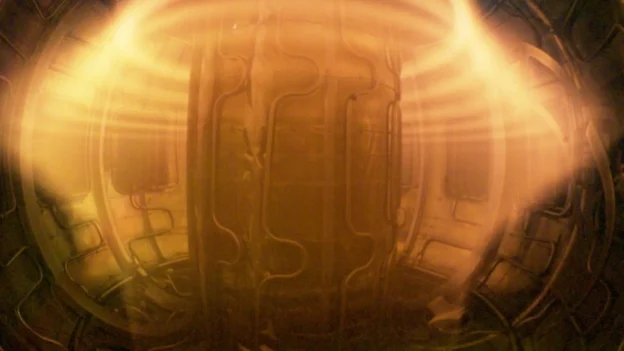Fusion energy company, Energy Singularity, has achieved a historic record by creating the world’s first high-temperature superconducting tokamak under the name“HH70“. This device is located in the eastern region of Shanghai, China.
The potential of tokamak and fusion energy
Recently, wind and solar energy projects have grown globally, with the aim of reducing dependence on fossil fuels and moving towards more sustainable energy sources. However, these energy sources face the challenge of intermittency, which means that they cannot generate electricity in a constant and controlled manner, keeping us to some extent tied to fossil fuels.
On the other hand, fission-based nuclear power is a controllable and carbon-free source of energy, although it faces criticism for safety reasons and radioactive waste management. Therefore, the company argues that nuclear fusion could offer a viable solution.
The nuclear fusion reactions which occur under extreme temperatures, involve the fusion of hydrogen atoms to form helium, releasing large amounts of energy. This process, which occurs naturally on the Sun, has been the goal of scientists to replicate on Earth by creating a plasma of hydrogen ions and electrons.
The tokamak “HH70”.
A tokamak is a doughnut-shaped device designed to contain this plasma, allowing it to reach the temperatures necessary for fusion to occur. These devices create magnetic fields that confine particles within the plasma, thus facilitating power generation. Although tokamaks have proven to be effective, they are often expensive to build and considerably large in size.
Energy Singularity, with the HH70 tokamak, seeks to change this reality by offering a smaller, more economical tokamak. The HH70 uses a magnetic system based on a high-temperature superconducting material, known as REBCO (rare earth copper barium oxide), which can be produced on a large scale.
The performance of fusion reactors is measured by the Q-value, which is the ratio between the energy generated and the energy required to maintain the reaction. So far, the highest Q value achieved on a tokamak is 1.53. The company aims to achieve a Q value of 10, and plans to build a next-generation tokamak by 2027, with a technology demonstrator planned for the end of the decade.
Follow us on social networks and don’t miss any of our publications!
YouTube LinkedIn Facebook Instagram X
Source and photo: Energy Singularity

